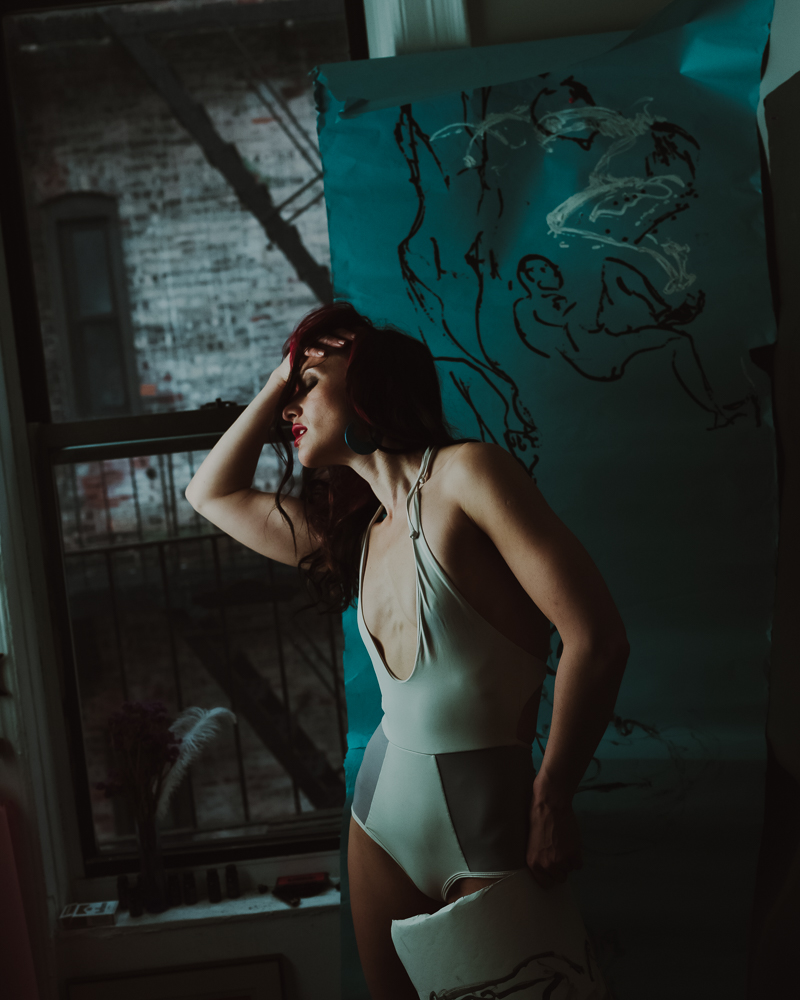
I seek to give myself as much freedom as possible: to be shameless and wrong, to enjoy not knowing what I do, and to be lost in trying to make sense of what I do. I try to unlearn as much as I can. I struggle with transferring what is in my head on paper or canvas. I got in a habit to see lines, and figures and detach them from my knowledge of what it represents. Then I summon my experience and creativity to choreograph the ideas and make the music of the image more a-tonal. In the last step, I delegate to work itself by asking it what it wants me to add.
Normality is subjective, and so is art.
Welcome to my world.

The Digital era we live in does a lot for us, artists, to be seen. However, when it comes to a fine art it removes one of the most important criteria, or. rather, the quality of the art piece: its size. It makes so much difference when you see great Kandinsky’s work in full size, it’s taller than you, it’s intimidating, yet, captivating; it’s a different experience, isn’t it? Or how unexpectedly petite Da Vinci’s Jakonda was when I saw her for the first time, yet, how powerful!
I wanted to give you an idea of a real size for my paintings, and I came up with these presentations, to give you a slightly different experience seeing my work. Hope you’ll enjoy it!
It was back in the 90s, in faraway Russia, Moscow, when started as a painter way before I could even speak: my dear mother would spend hours painting Russian dolls or “matryoshka” for sale. It was back I would sit by her side and paint with her. I was heading in a classical direction and enjoyed still life in watercolor and oil. After I moved to the United States, I found myself in a middle of a deep cultural shock. All I knew about myself at that time was that I can paint and draw. That was when the shift toward abstract painting happened.
Shapes, and lines, and colors. Disassembled, dismantled, yet, connected in a silent dance. A friend of mine said that the beauty of an abstract in this endless wanting to put all those floating in chaos elements back together. My little abstract sketches talk to me when I’m making them, and almost each of them names itself in the end.
Shapes, and lines, and colors. Disassembled, dismantled, yet, connected in a silent dance. A friend of mine said that the beauty of an abstract in this endless wanting to put all those floating in chaos elements back together. My little abstract sketches talk to me when I’m making them, and almost each of them names itself in the end.
This collaborative project interweaves painting, photography, and personal identity in a series of triptychs shot by Aleksandar Karjaka.
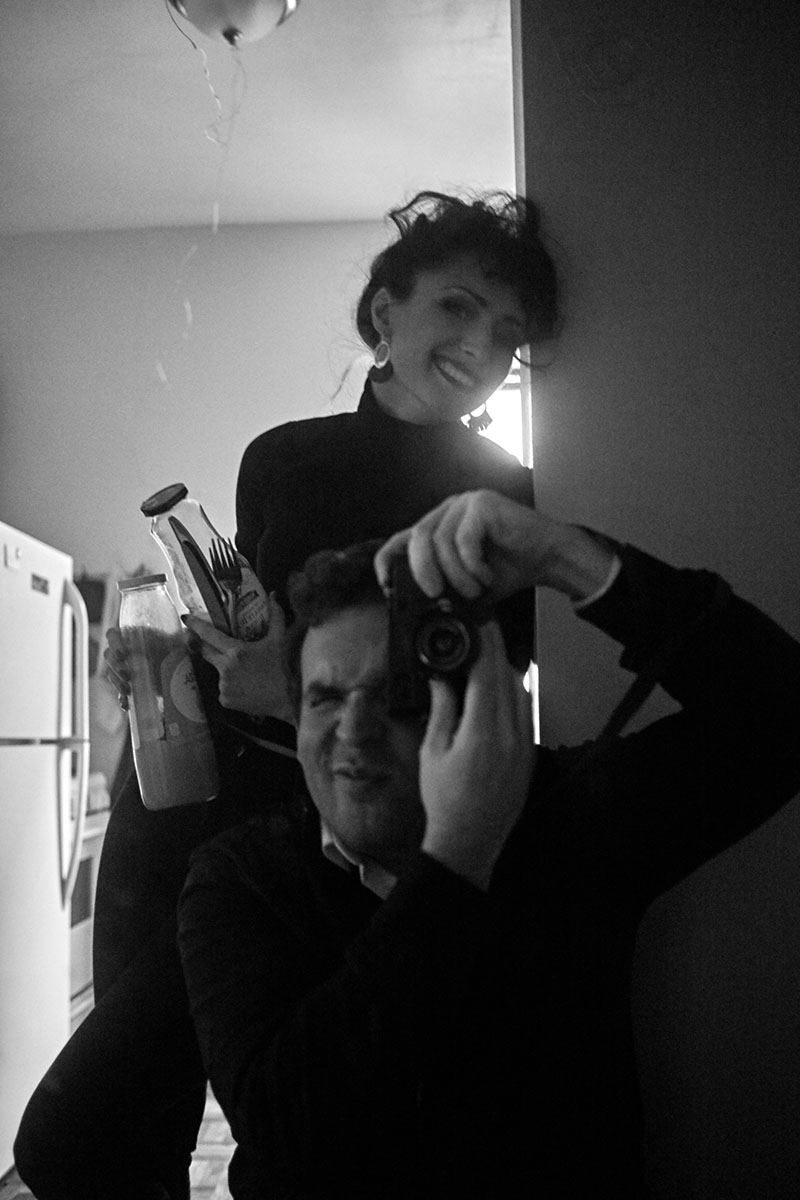
The triptych presents a fascinating artistic paradox – is She emerging from the painting, or is the painting born from Her? The center piece shows a bold red sun/circle being embraced or disrupted by shadowy forms, while the portraits capture Her in dynamic poses wearing red that mirrors the painting’s central motif. The narrative blurs the line between creator and creation, suggesting a cyclical relationship where art and artist give birth to each other. The theatrical gestures and the dramatic contrast between the red garment and the abstract background create a visual dialogue about feminine energy and artistic transformation.
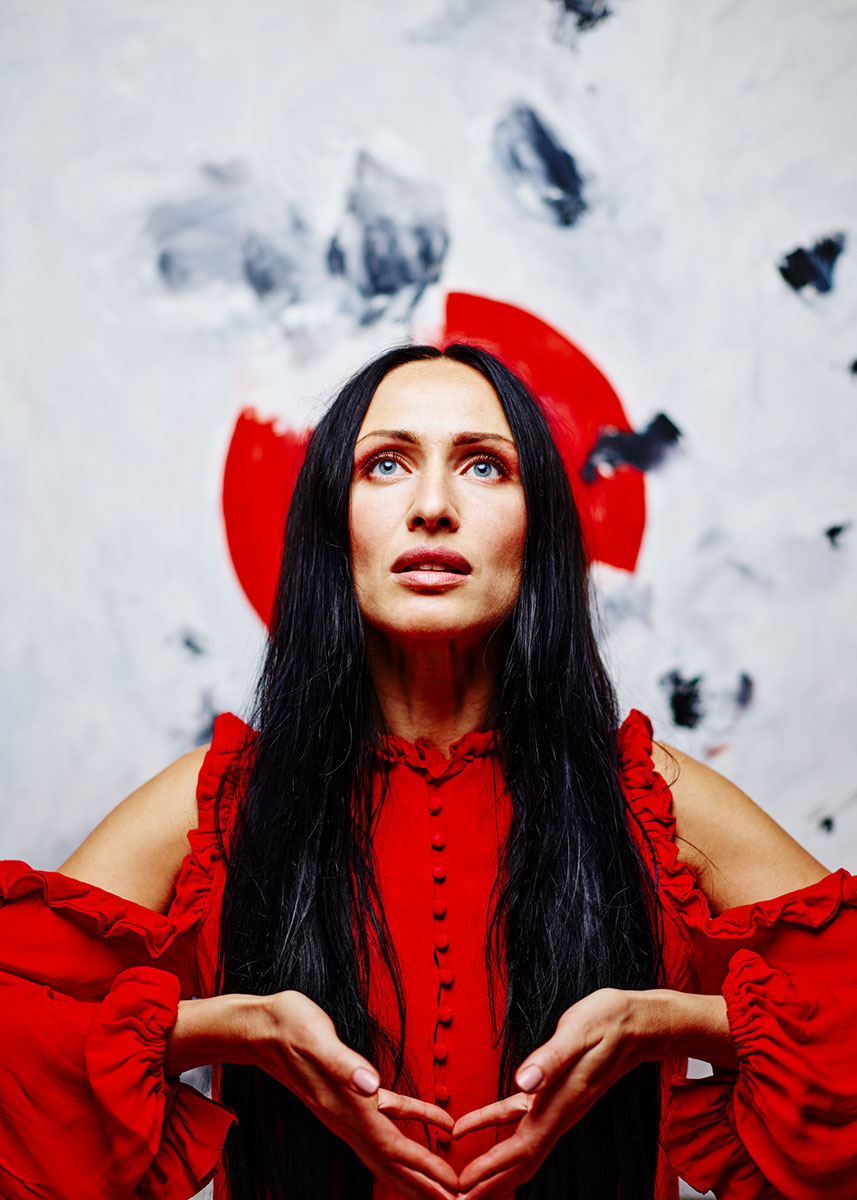
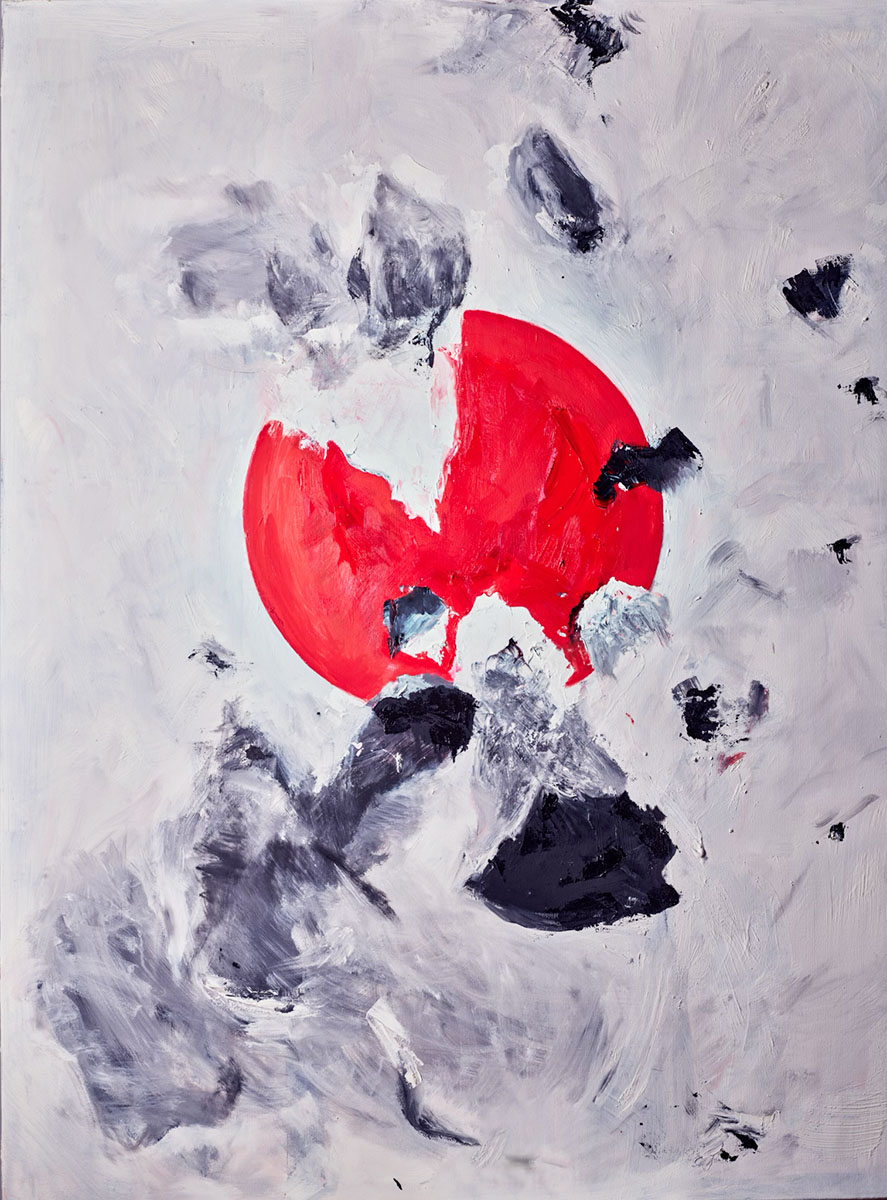
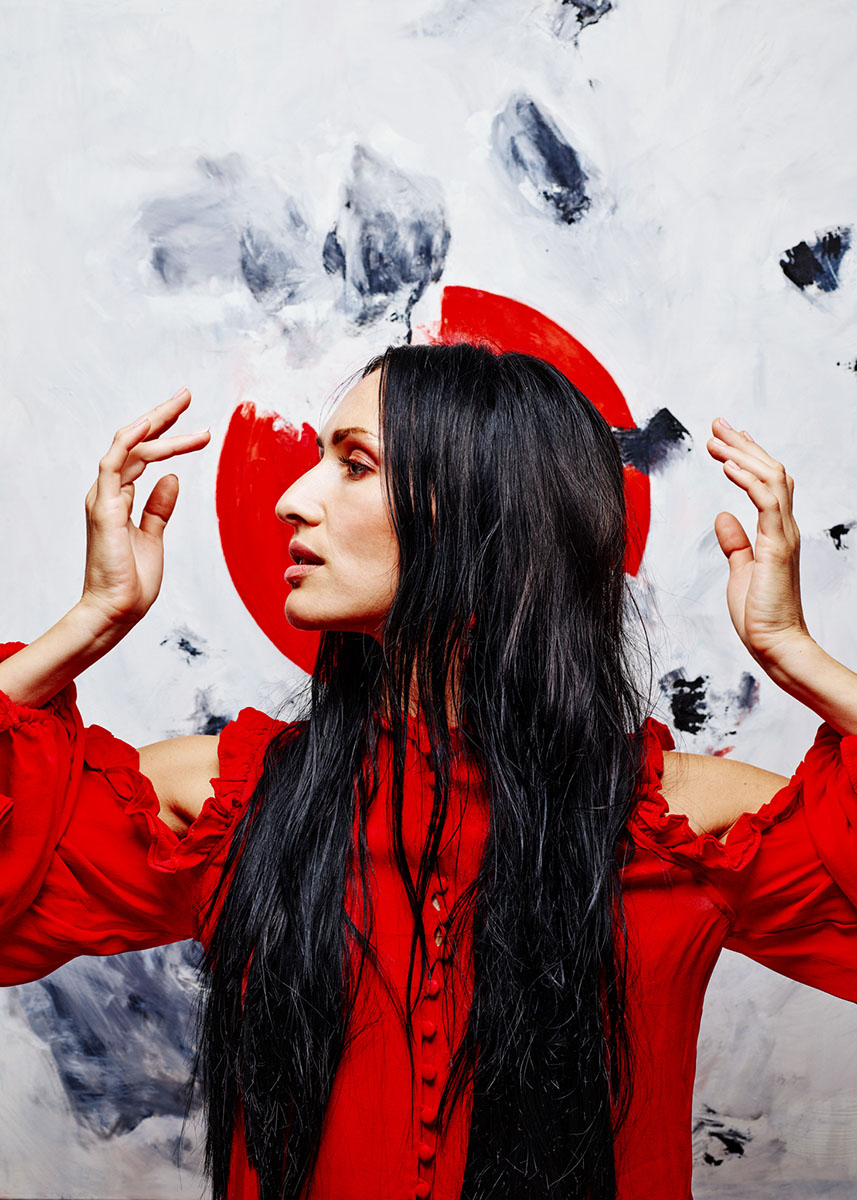
This triptych captures the duality of creation – both cosmic and personal. The central painting explodes with primordial energy, moving from celestial elements (the sun/moon) down to earthly forms, rendered in vibrant oranges, reds, and greens. The swirling, organic shapes suggest a world emerging from chaos, with each element finding its place in the natural order.
The two portraits of The Artist cleverly mirror this theme of duality – in one image, She appears untamed and primal with bare shoulders and long hair against the passionate backdrop. In the other, She is composed and focused, dressed in black, holding a camera – representing the artistic, observant side of her nature. Together, these images tell a story of how we contain multitudes – the wild and the controlled, the creator and the observer, the chaos and the order.
The way She positions herself against her own artwork creates a powerful narrative about how art flows from all aspects of our being – both the untamed creative force and the disciplined artistic eye.

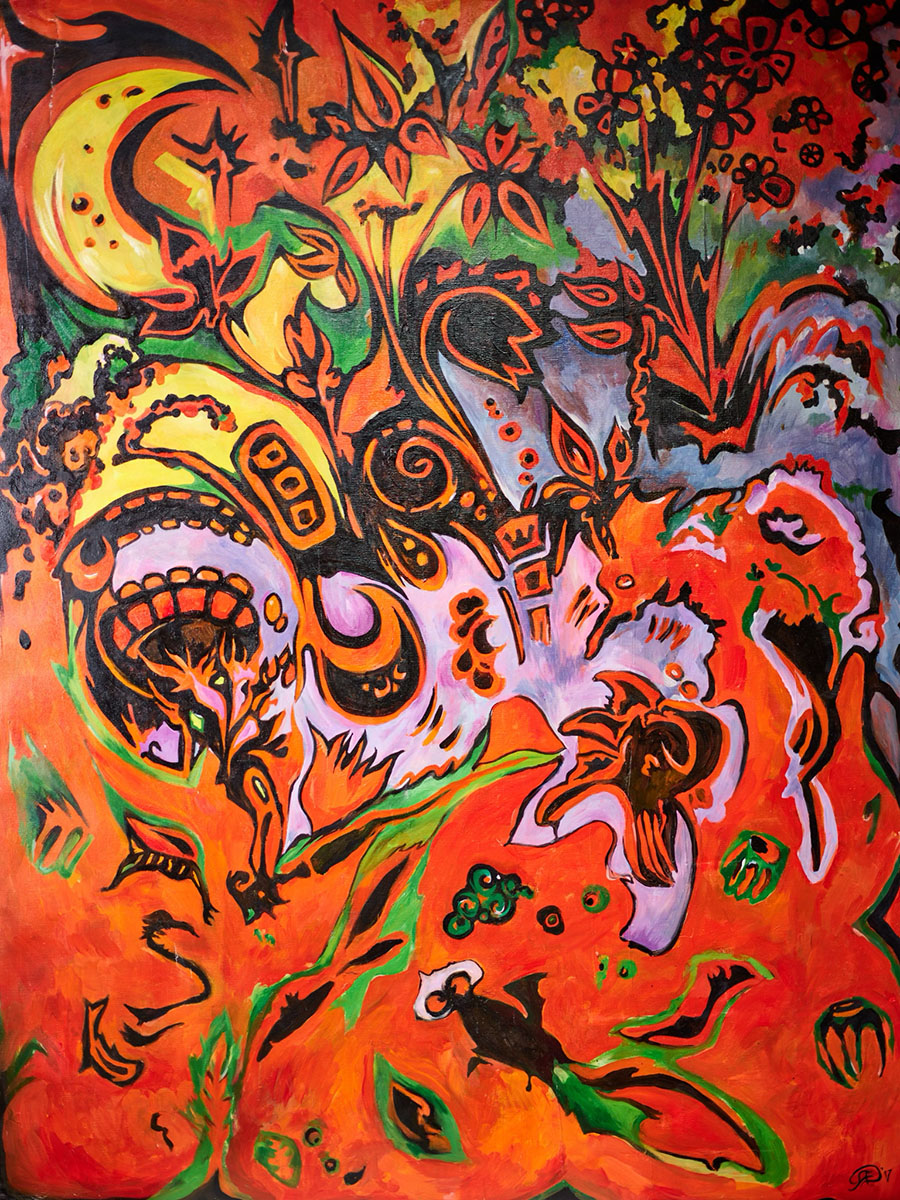
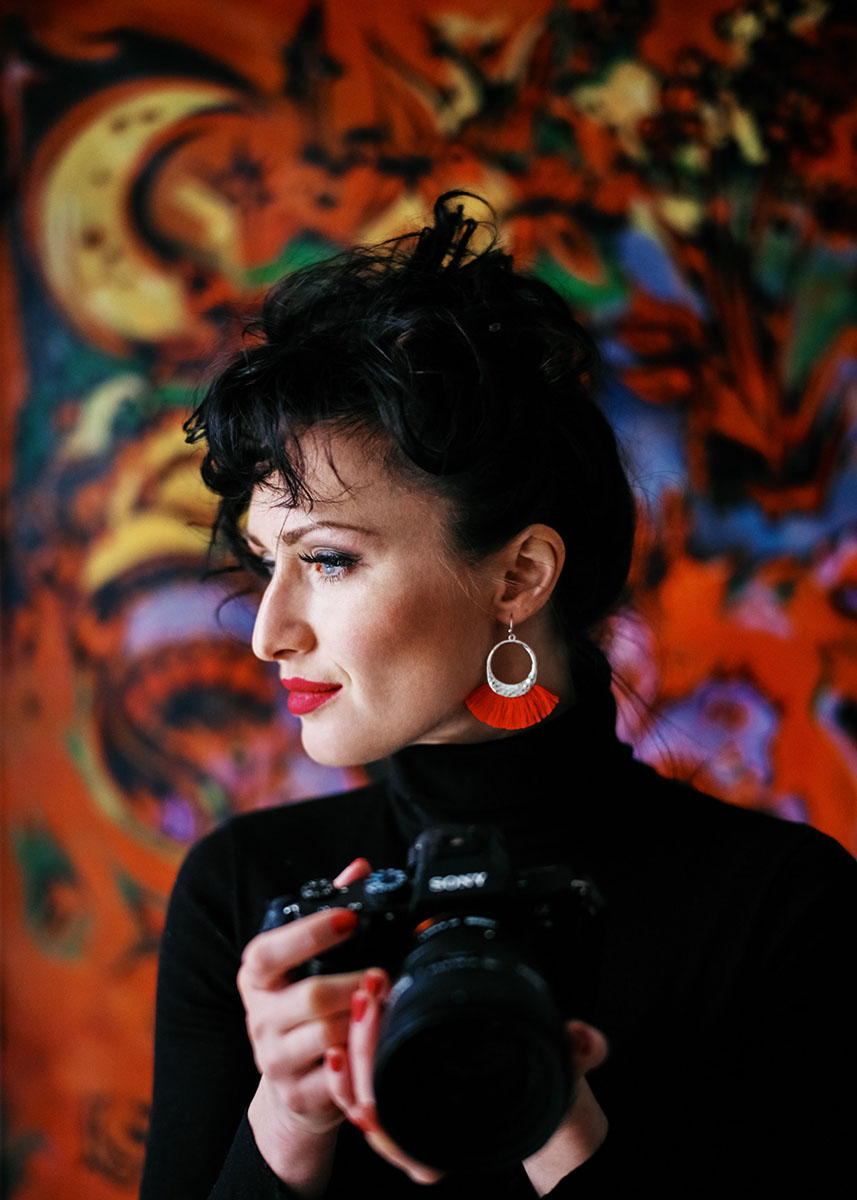
This triptych captures the duality of creation – both cosmic and personal. The central painting explodes with primordial energy, moving from celestial elements (the sun/moon) down to earthly forms, rendered in vibrant oranges, reds, and greens. The swirling, organic shapes suggest a world emerging from chaos, with each element finding its place in the natural order.
The two portraits of The Artist cleverly mirror this theme of duality – in one image, She appears untamed and primal with bare shoulders and long hair against the passionate backdrop. In the other, She is composed and focused, dressed in black, holding a camera – representing the artistic, observant side of her nature. Together, these images tell a story of how we contain multitudes – the wild and the controlled, the creator and the observer, the chaos and the order.
The way She positions herself against her own artwork creates a powerful narrative about how art flows from all aspects of our being – both the untamed creative force and the disciplined artistic eye.